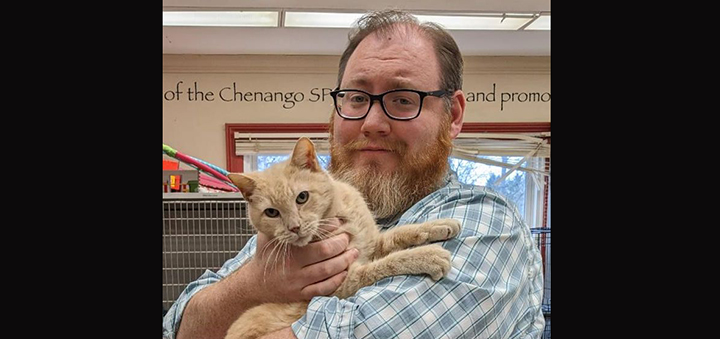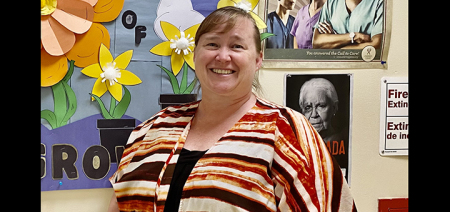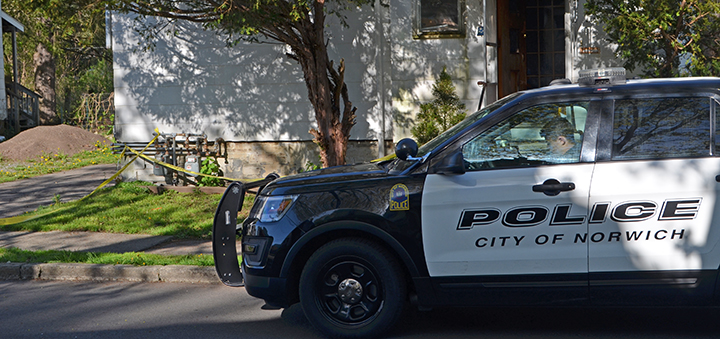From The Chenango SPCA: Mind The Gap
Published:
September 19th, 2023
 SPCA Executive Director Patrick McLaughlin with Fred.(Submitted photo)
SPCA Executive Director Patrick McLaughlin with Fred.(Submitted photo)
By Patrick McLaughlin,
Chenango SPCA Executive Director
CHENANGO COUNTY – As I've said before, the Chenango SPCA was fortunate to have a consultation in July from five veterinarians from the Shelter Medicine Program at Cornell's College of Veterinary Medicine. I've also mentioned their recommendation to reduce our number of adult cats available for adoption to 25. It's currently at 41, with another 55 kittens available, and even more cats who aren't ready for adoption quite yet.
Even though the Chenango SPCA hasn't attempted to count the number of stray cats in our community, the evidence we do have (including our intake numbers) suggests that it is significant in Norwich alone, to say nothing of the rest of the county. So, Cornell's advice to have fewer cats in the shelter seems counterintuitive. Let's explore that:
Cornell's recommendation is all about our shelter's capacity, a concept I've dwelt on quite a lot in these emails over the past couple of months. Cornell's opinion is that the Chenango SPCA has the capacity for 25 adoptable, adult cats. That's based on the size of our building, our staff, the cat enclosures we have, etc. If we had the exact same shelter, with the exact same staff, in the heart of New York City, or on an isolated island with no cats on it at all, our capacity would be the same, because "capacity" is the measure of how much we can handle.
The question of how many stray cats there are in Chenango County, or even just in Norwich, is not a question of capacity, it's a question of our community's need. New York City has a greater need for stray cat sheltering than an isolated island with no cats at all. That's one of the reasons New York City has so many large animal shelters, and an island with no cats would, we assume, have none (at least, not for cats).
I know schools are my go-to analogy, but that's because the comparison is so simple: How does a community decide how big its schools need to be? Certainly, the student population has to be a major factor. A community with 5,000 school-age children right now should have schools large enough to educate them, including all the facilities required to do that (classrooms, a cafeteria, a library, a gym, a nurse's office, etc.).
Another important factor ought to be growth. That can be hard to predict, but if a community with 5,000 school-age children knew that its population was growing, it should be looking at expanding its schools. If the same community knew that its population was shrinking, it should be considering how and when to close schools and re-purpose the buildings.
When it comes to animal welfare in Chenango County, the fact that we don't know how many stray companion animals live in our community is a big problem. What we do know at the moment is that our community's need is greater than our shelter's capacity. How do we solve that problem?
Obviously, one approach is to increase shelter capacity. The two primary ways to do that are expanding the physical capacity of the shelter and expanding its capacity for care. The first of those options would require renovations to our facility. The second would require decreasing our animals' "length of stay" so that we can serve more animals per year in the same space.
Beyond increasing capacity, we also have an option that schools don't: to decrease need. The child population of a community is fairly stable over time, much more so than the population of homeless companion animals. Thankfully, it is possible to meaningfully reduce the stray animal population. For that, we'd be talking about expanded spay/neuter programs, support to keep healthy community cats in place, and other "intake diversion" programs aimed at keeping pets in their families to begin with.
If the community of Chenango County is really going to address the needs of its homeless companion animals, we're going to need to have all options on the table.
Help us reduce our length of stay--adopt!
Comments







